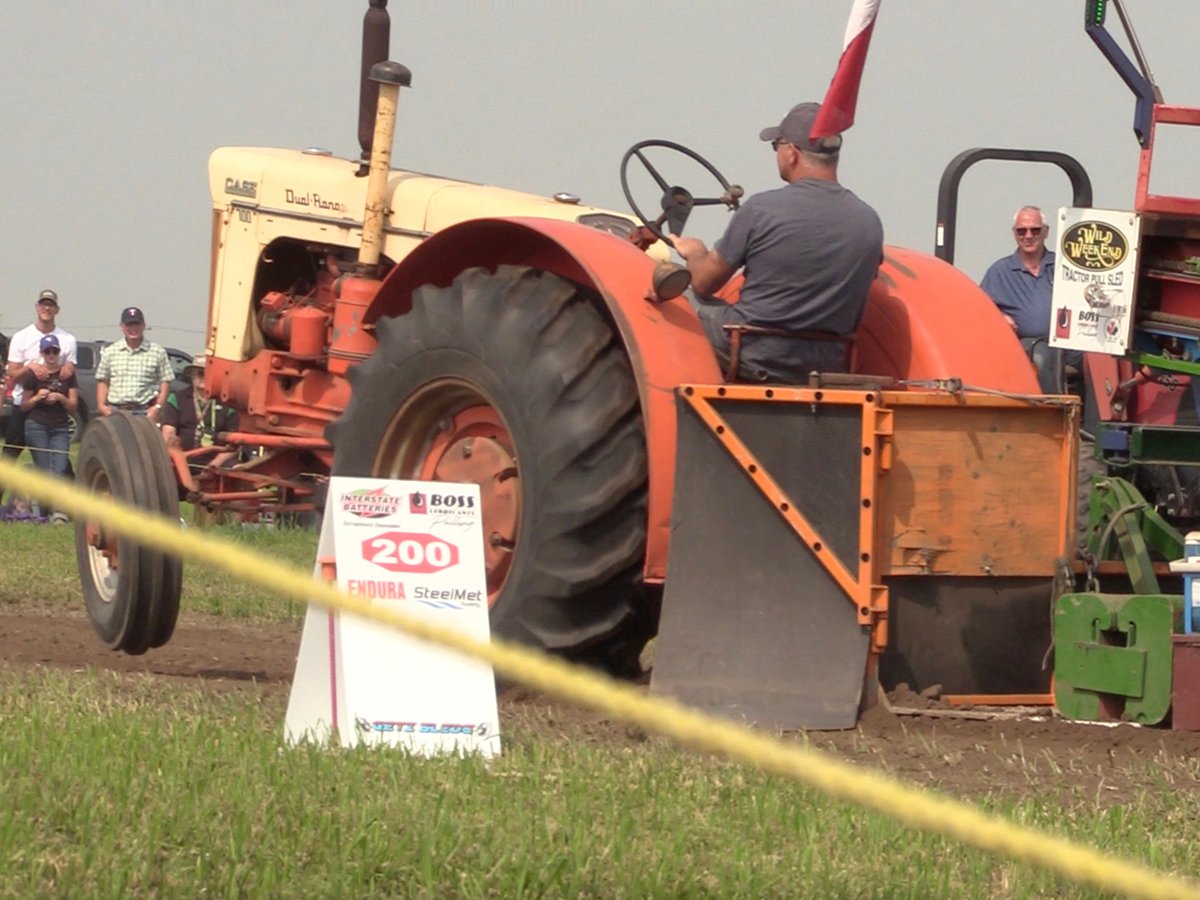While attending a recent home economics conference, I went to a workshop on food plating by Marvin Wesaquate, chef at the Regina Inn.
Here are a few of his suggestions for presenting food so that it is pleasing to the eye.
- Plates frame the food, the same as a photo or picture is framed. Therefore, leave a space around the rim of the plate for the frame, with no food on it.
- Most chefs use a solid white plate because a busy patterned plate takes away from the food.
- Try to have a variety of coloured food on the plate.
- Use different shapes and cooking techniques with vegetables and the other foods.
- A variety of textures add visual interest, such as hard, soft, smooth, coarse and crisp.
- Choose a focal point. This does not have to be in the centre of the plate. Often it is the protein that is the main item on the plate.
- Food should not be crowded.
- Garnishes add flavour, texture and colour to each dish. They should be appropriate to the dish and echo some of the ingredients.
- Garnishes should enhance the dish without being overpowering. Don’t get stuck in a rut of always using a sprig of parsley and a lemon wedge. Never decorate a plate with something inedible.
Read Also

Vintage power on display at Saskatchewan tractor pull
At the Ag in Motion farm show held earlier this year near Langham, Sask., a vintage tractor pull event drew pretty significant crowds of show goers, who were mostly farmers.
In his presentation, Wesaquate used the following spice mix to coat steelhead trout he cooked for us. It contains the tastes of plants grown in prairie soil. Wesaquate suggests sprinkling the spice mixture over ribs, chicken, pork or beef. Also, to increase flavour and tenderness, sprinkle spice mix on your meat of choice, then wrap in plastic wrap and marinate in the refrigerator before cooking.
Chef’s choice spice mix
½ cup roasted flaxseed 125 mL
½ cup pearl barley 125 mL
½ cup wild rice 125 mL
¼ cup green lentils 60 mL
¼ cup red split lentils 60 mL
¼ cup fennel seed 60 mL
2 ounces dried 56 g
chanterelles
1 cup five peppercorn 250 mL blend
1 cup chili power 250 mL
¼ cup garlic granules 60 mL
¼ cup onion 60 mL
powder
¼ cup coarse 60 mL
sea salt
1 ounce fresh 28 g
basil
½ ounce fresh 14 g
rosemary
Using a grinder, grind the first eight ingredients until coarse. Place in a bowl. Add the next four ingredients to the coarse grains. Finely chop the fresh herbs and mix all ingredients together.
Source: Regina Inn Hotel and Conference Centre.
Lentil potato spinach soup
A new recipe on the www.pulsecanada.com website is this soup.
1 cup dry green lentils 250 mL
2 tablespoons 30 mL
vegetable oil
2 medium onions, chopped
1 tablespoon minced 15 mL
garlic
2 cups vegetable or 500 mL
chicken stock
2 tablespoons chopped 30 mL
fresh parsley
10 ounces chopped 283 g
spinach, fresh or frozen and thawed
2 medium potatoes, cubed
salt and pepper to taste
¼ cup lemon juice 60 mL
Cover lentils with water in a medium saucepan. Bring to a boil and simmer, covered, for 20 minutes. Set aside. Drain liquids.
Sauté onions in a large saucepan until browned.
Add stock, lentils and remaining ingredients, except lemon juice. Cook mixture for about one hour until lentils and potatoes are tender.
Purée one-quarter of total soup and return to saucepan. Stir in lemon juice just before serving. Serves five.
This is a gluten-free recipe. It is a good source of riboflavin and an excellent source of fibre, vitamin A, folate, niacin, potassium and vitamin B6.
Rhubarb/saskatoon pie filling
Thanks to everyone who responded to our request for a pie filling recipe using rhubarb, saskatoons and lemon pie filling. I’ll forward them to M.A.K. I tried this recipe sent in by V. D. and agree that it is tasty.
10 cups rhubarb 2.5 L
10 cups saskatoons 2.5 L
½ cup water 125 mL
3 cups sugar 750 mL
1package lemon pie filling
1package strawberry 85 g
Jello
Pour boiling water over the rhubarb and let sit for five minutes. Drain well. In a large pot, add saskatoons to the rhubarb along with 1/2 cup (125 mL) water and sugar. Cook until soft, stirring constantly. Add lemon pie filling and strawberry Jello and mix well. Bring to a boil. Remove from heat and cool. It can be frozen or canned.
Without a tested recipe, freezing rather than canning would be a safer way to preserve this pie filling. I found it made enough for four pies.
To bake, I followed the directions on a commercial can of pie filling. The directions were to put the pie filling into unbaked nine inch (23 cm) pie shells and then cover with a top crust. Bake at 425 F (220 C) for 10 minutes, then reduce the heat to 375 F (190 C) and bake for another 40 minutes or until golden brown.
Mercury thermometers?
I recently had an oven thermometer that wasn’t working. I wondered if it contained mercury, and if so, how I should dispose of it.
On investigation, I found out that not all thermometers contain mercury. A silver liquid inside means mercury, while a red liquid usually indicates an alcohol thermometer.
Mercury is a naturally occurring, highly toxic, heavy metal that moves between water, air and soil as a result of natural and human activities. It is persistent and a bio-accumulative toxin, which means that it accumulates in animals and people, becoming more concentrated as it moves up the food chain, causing harm to people and the environment.
Items in our home that may contain mercury are button batteries, fluorescent tube lights, fever thermometers, thermostats, switches and relays, barometers and dental fillings. Now, mercury-free alternatives are available.
Do not discard mercury items in the trash, flush down the toilet or leave on the side of a road. The mercury can leach from landfills,be emitted into the air from burning waste or flow into our water supplies.
Instead, take them to a household hazardous waste collection facility or collection event in your area. Our local rural municipality has an annual collection of hazardous materials at the RM shop. Check for such events or deposit sites in your area.
A broken thermometer
When a mercury thermometer breaks, the mercury vaporizes, posing an immediate and serious health risk. If mercury is inhaled or absorbed through the skin, it can damage the central nervous system, especially during fetal and childhood development.
To clean up a broken mercury thermometer, do not vacuum. Make sure the spill area is adequately ventilated. Wear rubber gloves to prevent skin contact.
Keep hands away from your face, especially eyes, nose and mouth. Isolate and contain the spill immediately. Divert it from drains, cracks and crevices.
Carefully pick up the broken glass. Wrap or fold the pieces in a paper towel and place in a leak-proof plastic bag. Working from outside of the spill area toward the centre, push small mercury beads together with a card or stiff paper to form larger droplets.
Use an eyedropper or two stiff pieces of paper to pick up droplets and place into a leak-proof bag. Use the sticky side of duct or masking tape to pick up remaining glass and mercury droplets. Place all into the same leak-proof bag.
Using a flashlight, look all around the area of the spill. The light will reflect off the mercury beads, making it easier to see them.
When finished, carefully remove the rubber gloves and place them in the leak-proof bag, along with all the debris. Place in another leak-proof plastic bag, twist shut and seal the opening with tape. Take the bag to a household hazardous waste collection facility or event.
Alma Copeland is a home economist from Elrose, Sask., and one of four columnists comprising TeamResources. Send correspondence in care of this newspaper, Box 2500, Saskatoon, Sask., S7K 2C4 or contact them at team@producer.com.
















